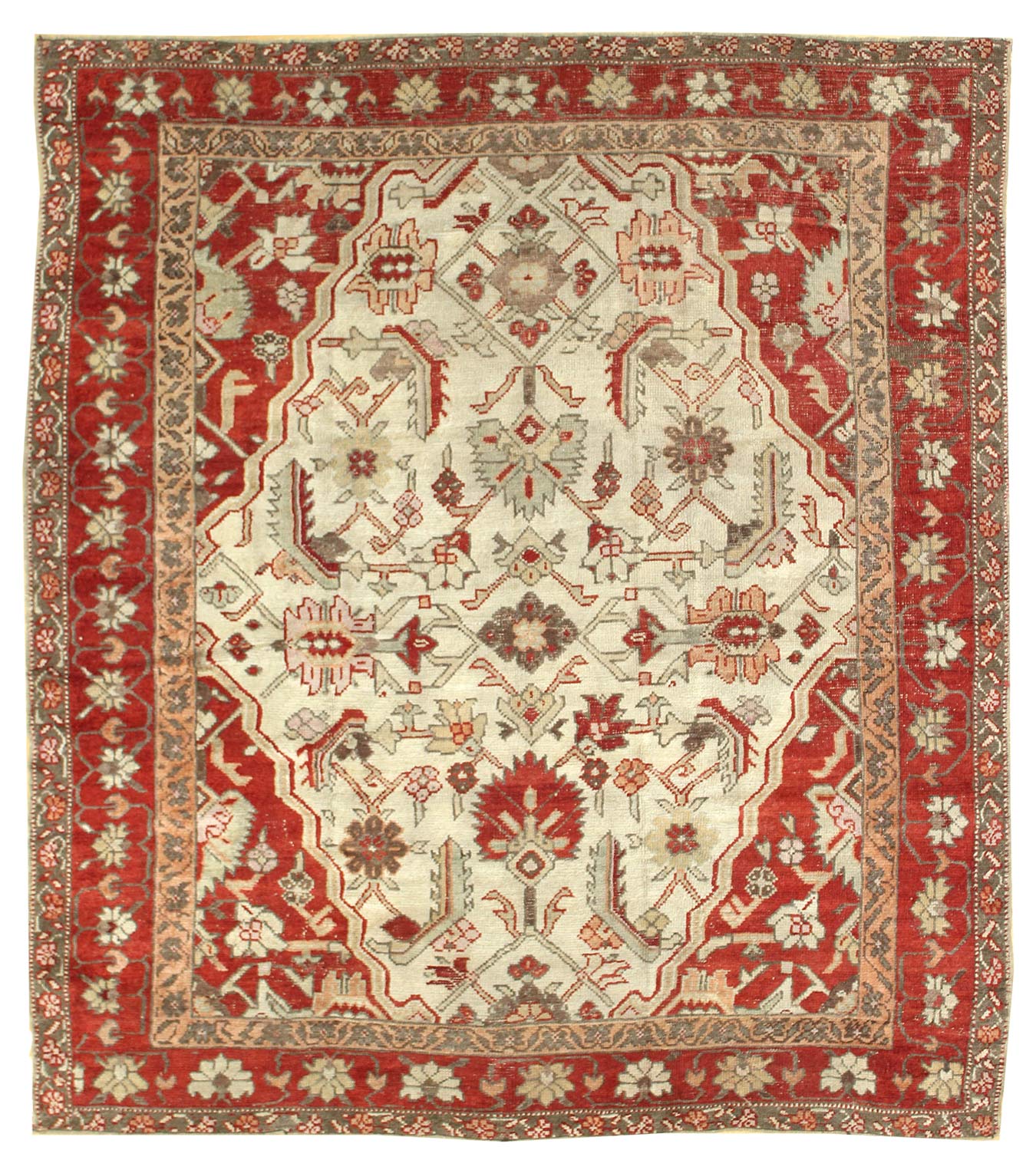
The History of Oushak Rugs and Their Beautiful Features
20 - 07 - 2020Oushak rugs, also known as Ushak rugs, are woven in Western Turkey and have distinct designs, such as angular large-scale floral patterns. They usually evoke a calmness and peacefulness in a room. To this day, production of Oushak rugs continues with a contemporary look and feel but retain the aesthetic of their prototypical predecessors.
Beginnings
Oushaks began in a location just south of Istanbul, in a region that was to become the rugs namesake, Oushak. Although nomads first produced the rugs for their personal use, since the 15th century, Oushak was the center of significant production of Turkish rugs. In the 17th century, Europeans began buying their rugs and carpets from European manufacturers. When Oushak carpets came back into vogue in the 19th century, the practice of making the rugs had diminished in Oushak. The artists in nearby villages began to create the Oushaks using the traditional process.
Approximately 40 years ago, anthropologists were exploring the rugs and carpets in the larger mosques of Istanbul (i.e., the Sultan Ahmet Mosque). The scientists found the floors of the mosques covered with hundreds of floor coverings, often six or seven deep, and almost all were from the area surrounding Oushak.
Middle Eastern carpets can also be seen in art from the Renaissance Period. There are more paintings of these rugs and carpets than actual rugs and carpets that survived from that age. Artists added the rugs to paintings as decorative and colorful focal points in the artwork. In fact, scientists often use antique rugs' date of creation on carpets that artists painted into datable European paintings.
Materials
The craftsmen who made these rugs were some of the finest in history. Not only was quality a priority but they also were very much concerned with the aesthetic appeal of the carpet. Oushak materials are cotton, wool, silk, and sometimes metal threads. It is the Oushak rug's foundation that is cotton, and the pile is wool.
Weaving
Oushak weavers are highly trained and experienced weavers. The artistry and essence of the rugs trickled down from generation to generation. From time-to-time, a specific knot would appear that was not one which had ever been used in a particular area. But even though the process of making the rugs and carpets is traditional, there have been some new modifications in the technique that are not common in the area.
Buyers should know that the rug's density is of utmost importance. The manner in which the rug-maker ties the knots is critical. If the knots he ties are loose, the rug will seem flimsy. Loose ties will also make the rug less durable. Packing the knots down with a comb-like tool known as an punja is an important part of this process.
Designs
An Oushak rug or carpet is easily recognized. Most Oushaks have a golden or dark ivory background with floral or geometric designs. The paints used come in colors ranging from cinnamon to saffron from natural vegetable dyes, and the wool used gives off a silky, luminescent aura.
In the late 19th century, floral patterns became more prominent, and artists produced room size rugs to accommodate European standards. Lately, some commercially manufactured Oushaks have a red background and floral patterns within a blue field.
A Oushak rug is a very excellent addition to your home. Take this advice to ensure you are getting the rug you want:
- It will be hand-knotted; the more knots, the better.
- Ascertain whether the rug is organic vegetable-dyed or chemically dyed. Vegetable-dyed fibers are more desirable.
- Reputable rug and carpet retailers will allow you to take the rug home to try it out. Once you have borrowed it, you can see how it looks in your home, to ensure that you have the rug you want. Landry & Arcari will always let you take a rug home to try it in your space.





